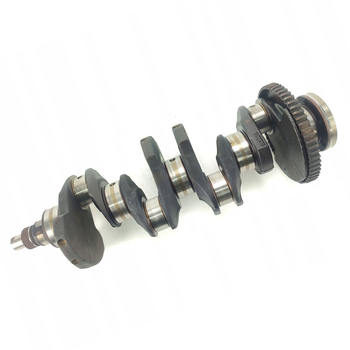First Section: Understanding the Crankshaft
To be honest, the crankshaft is one of the most critical components in an internal combustion engine. Frankly speaking, without it, your car wouldn't move an inch. So, what exactly is a crankshaft, and what does it do? Let's dive into the details.
Subsection 1: The Crankshaft's Role in Engine Function
The crankshaft's primary function is to convert the linear motion of the pistons into rotational motion. This rotational motion is then transmitted to the transmission, which ultimately propels the vehicle forward. In essence, the crankshaft acts as a bridge between the engine's power source and the wheels.
Second Section: How the Crankshaft Works
Interestingly enough, the crankshaft's design plays a significant role in its ability to convert linear motion to rotational motion. The crankshaft is made up of several key components, including the main journals, crank pins, and counterweights.
Subsection 1: Main Journals and Crank Pins
The main journals are the round surfaces on the crankshaft that the main bearings ride on. The crank pins, on the other hand, are the offset projections on the crankshaft that connect to the connecting rods. When the pistons move up and down, they push on the connecting rods, which in turn cause the crank pins to rotate around the main journals.
Subsection 2: Counterweights
Counterweights are the heavy metal pieces attached to the crankshaft to balance the weight of the pistons and connecting rods. This balance is absolutely necessary to prevent excessive vibration and reduce engine wear.
Third Section: Maintaining and Repairing the Crankshaft
Given the crankshaft's critical role in engine performance, it's essential to keep it in good working order. While regular maintenance can help prevent crankshaft problems, sometimes repairs are necessary.
Subsection 1: Regular Maintenance
Regular oil changes and engine tune-ups can help ensure that the crankshaft is properly lubricated and running smoothly. Additionally, checking the engine's oil level frequently can help prevent damage to the crankshaft and other engine components.
Subsection 2: Crankshaft Repair
If you're experiencing engine problems, it's possible that the crankshaft is to blame. Common crankshaft issues include bent or cracked crankshafts, damaged bearings, and worn out seals. In some cases, these issues can be repaired, while in other cases, a complete crankshaft replacement is necessary.
Fourth Section: Conclusion
In my experience, understanding the crankshaft's function and importance is absolutely essential for any car owner. By taking proper care of your crankshaft, you can help ensure that your vehicle runs smoothly and efficiently for years to come. So, take the time to learn about your engine's components and give your crankshaft the attention it deserves.
Fifth Section: FAQs
1. How often should I have my engine tuned up?
2. Can I drive my car with a damaged crankshaft?
- Driving with a damaged crankshaft can cause further engine damage and should be avoided.
3. How much does it cost to replace a crankshaft?
- The cost of a crankshaft replacement can vary depending on the make and model of your vehicle, but it typically ranges from $1,000 to $3,000.




